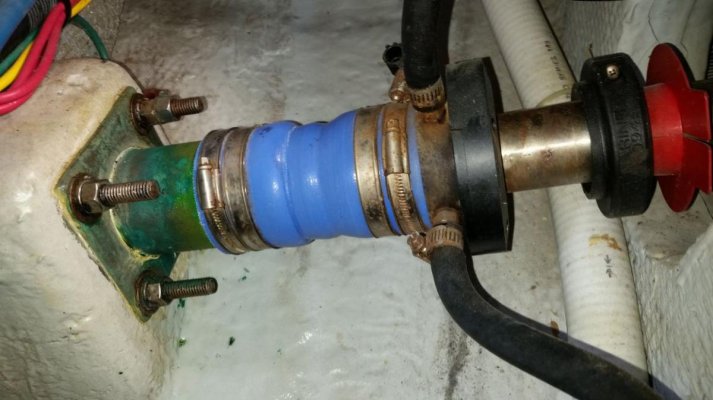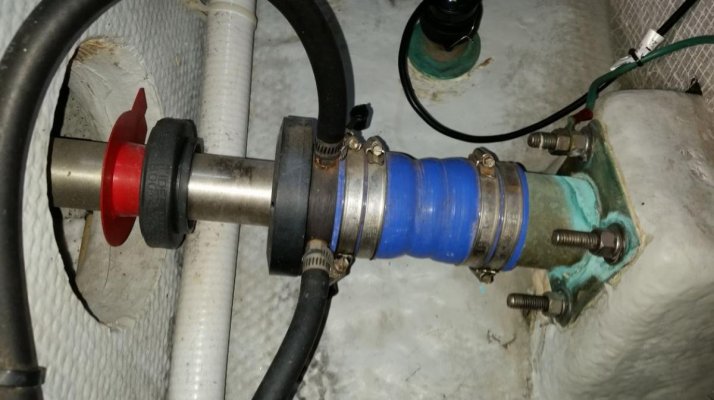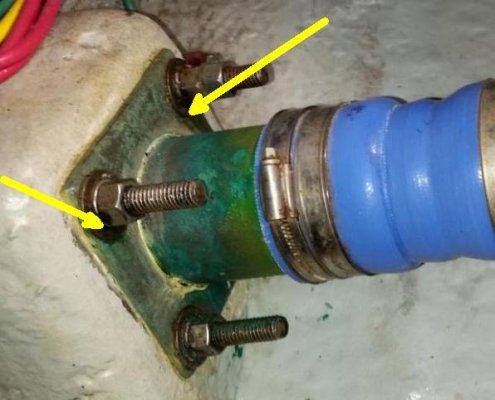How am I supposed to know that? Just kidding - but not really.
I'm not sure how you are set up, I would assume that you would want no connection between the tube and the shaft.
Having said that, you mentioned a green bonding wire, that tells me you have a bonding system and the stern tube is attached to a hull zinc somewhere.
Heh. Me too.

I've been thinking no connection, with shaft "floating" inside the tube. We'll see; haven't heard from my guru yet.
Now that I think about it, you can check the continuity of the two stern tubes. If they have good continuity, then at least those two items are connected (even if they are not connected to the rest of the bonding system). If they are connected, they should be corroding at similar rates. If there is no connection, get help trouble shooting your bonding system.
If you find good continuity and no other sign of galvanic corrosion - I might not loose any sleep over the fact that one is tarnishing and the other is not.
I'm hoping to check both... and then hoping they're roughly equal. Connected, not connected, whatever... roughly equal readings would seem good. I think. If not about the same, then that might mean one or the other is/is not connected... or it might mean one is deteriorating at a different rate. I think. (Thinking out loud here, a bit.)
I'll digress a bit...
The part I'm struggling with now is visualizing what's behind the flange, and how the tube is connected. The bonding wire is connected to the flange, but if this is a two-part assembly (separate tube and flange), then I don't see a way that bonding wire would have anything to do with the tube itself.
But then I also can't figure out how water would be coming in at the mounting studs. IF IF IF the tube is fully glassed into the hull, then I'd expect no water between tube and fiberglass, hence no water to leak through the mounting studs in the flange. In this case, I don't see what the flange accomplishes; it doesn't appear to be load-bearing.
OTOH, IF IF IF the tube is "sealed" into the hull (4200, 5200, whatever) then (some of) that could have failed I guess... which would mean water ingress is possible... and maybe the flange is meant to be an extra sealing surface...
Maybe.
Anyway, the part that got my attention most is the amount of verdigris that had "dripped" (?) down under the tube and onto the inside of the hull under there. I didn't get a pic of that before I at least cleaned it up a little, and it was actually easy to wipe most of it up quickly with a dry rag... but that too was another symptom that was so much different from the other side.
Hoping to hear from my guru soon.

-Chris





